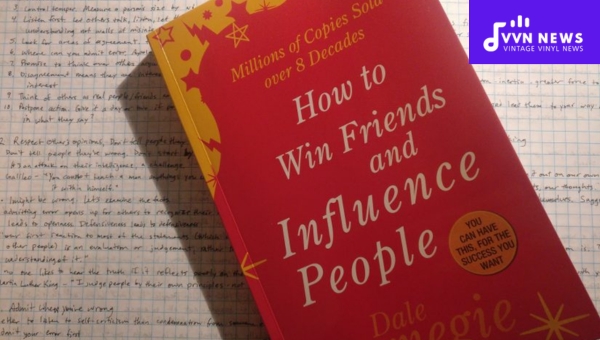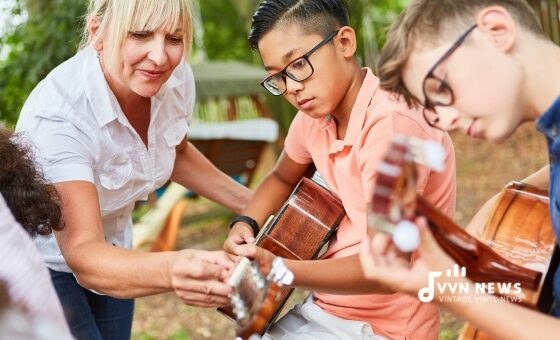Did you know that Dale Carnegie’s bestselling book, “How to Win Friends and Influence People,” is not only a guide for personal growth and success, but also a valuable resource for teachers? In this article, I will explore 10 teachings of “How to Win Friends and Influence People” that can help educators create engaging and impactful learning environments.
Whether you teach in a traditional classroom setting or online, these tried-and-true principles can enhance student motivation, foster positive relationships, and ultimately contribute to academic success.
So, let’s delve into the 10 teaching uses of ‘How to Win Friends and Influence People’ and discover how it can transform your teaching practices.
Teachings of How to Win Friends and Influence People
Dale Carnegie’s timeless classic, “How to Win Friends and Influence People,” offers invaluable insights that extend beyond personal growth and success.
As a teacher, you can harness the power of these principles to create a positive impact in your classroom.
In this article, we will explore 10 teaching uses of “How to Win Friends and Influence People” that can help you build strong relationships with your students and enhance the learning experience.
Genuine Interest in Others
One of the main teachings in “How to Win Friends and Influence People” is the importance of showing genuine interest in others. As a teacher, this means taking the time to get to know your students on a personal level.

Ask them about their interests, hobbies, and goals. Show empathy and understanding towards their challenges and celebrate their successes. By demonstrating that you care about your students, you create a supportive and trusting environment that encourages their engagement and growth.
Also Read: Alice Cooper’s Yearbook [Unveiling The History Of A Rock Icon]
Active Listening
Active listening is another essential teaching use of Carnegie’s principles. It involves giving your undivided attention to your students when they speak and truly understanding what they are saying.
Practice making eye contact, nodding, and providing verbal cues to show that you are actively engaged in the conversation.
By actively listening, you not only strengthen your relationship with your students but also gain valuable insights into their perspectives, struggles, and learning needs.
Making Others Feel Important
Everyone wants to feel important, including your students. By implementing Carnegie’s teachings on making others feel important, you can significantly impact the classroom dynamic.
Acknowledge each student’s contributions by praising their efforts and achievements publicly (when appropriate) or privately. Encourage them to share their ideas during class discussions or give them responsibilities that make them feel valued.
When students feel important in the classroom setting, they gain confidence in themselves and become more motivated to excel academically.
Also Read: 11 Best Beginner Flute Books [Start Your Melodic Journey Right]
Criticism Handling and Avoiding Arguments
Handling criticism with tact is a vital skill for teachers discussed extensively in “How to Win Friends and Influence People.” When providing feedback or addressing challenges with your students, focus on constructive criticism rather than negative judgment.

Offer specific suggestions for improvement while highlighting their strengths. It is crucial to create an atmosphere where feedback is seen as an opportunity for growth rather than a personal attack.
Avoiding arguments is another teaching use highlighted by Carnegie’s principles. Instead of engaging in confrontations, foster a respectful and open dialogue with your students.
Encourage them to express their opinions and perspectives, even if they differ from yours. Create a safe space for healthy discussions where different viewpoints can be shared and understood.
By modeling conflict resolution strategies, you teach your students the importance of empathy, understanding, and collaboration.
Winning People Over
The ability to win people over is a valuable skill for teachers to cultivate. Carnegie’s teachings emphasize the importance of building rapport and trust with others.
In the classroom, this involves creating a positive atmosphere where students feel comfortable expressing themselves and taking risks in their learning.
Show enthusiasm for the subject matter, be approachable and supportive, and actively seek opportunities to connect with your students on a personal level.
To win people over also means recognizing individual strengths and celebrating each student’s unique abilities. Provide opportunities for students to showcase their talents through presentations, projects, or class activities.
When students feel seen and valued for who they are as individuals, they develop a sense of belonging in the classroom community.
Encouraging Self-Expression
One of the key teachings in “How to Win Friends and Influence People” is the importance of encouraging self-expression. As a teacher, you can create an environment where students feel comfortable voicing their thoughts and ideas.
This can be achieved through open-ended discussion questions, group activities, and project-based assessments. By allowing students to express themselves freely, you not only foster their confidence but also promote critical thinking and creativity in the classroom.
Also Read: Christmas Flute Books [Best Picks For Festive Melodies]
Sincere Compliments
Another teaching use of “How to Win Friends and Influence People” is the art of sincere compliments. Recognizing and acknowledging your students’ efforts and achievements goes a long way in building positive relationships.

Be specific when offering compliments, highlighting the unique qualities or skills demonstrated by each student. This not only boosts their self-esteem but also motivates them to strive for excellence.
Valuing and Appreciating Others
Cultivating a sense of value and appreciation for others is a key principle discussed in Carnegie’s book. As an educator, it is important to teach your students the importance of recognizing and appreciating the contributions of their peers.
Encourage collaboration, teamwork, and empathy within the classroom through activities that promote mutual respect. By valuing each student’s perspective and fostering a culture of appreciation, you create a supportive learning environment that encourages growth.
Conflict Resolution
Conflicts are inevitable in any social setting, including classrooms. However, “How to Win Friends and Influence People” offers valuable strategies for resolving conflicts amicably.
Teach your students effective communication skills such as active listening and expressing oneself clearly while considering different perspectives.
Encourage open dialogue, discussions, or even role-playing scenarios that allow students to practice conflict resolution techniques in a safe environment. By equipping them with these skills, you empower them to resolve conflicts peacefully throughout their lives.
Also Read: Understanding Music Transposition: A Complete Guide
Empathy for Strong Relationships
Empathy lies at the heart of strong relationships, and it is a vital teaching use of “How to Win Friends and Influence People.” Encourage your students to put themselves in others’ shoes and understand their feelings and perspectives.

Foster empathy by incorporating literature, real-life scenarios, or even guest speakers who can share diverse experiences. This helps students develop a deeper understanding of others and build meaningful connections based on empathy and understanding.
By incorporating these teaching uses of “How to Win Friends and Influence People” into your classroom practices, you create a positive and engaging learning environment. Encouraging self-expression allows students to explore their unique voices and ideas.
Sincere compliments boost their confidence and motivation, while valuing and appreciating others fosters a sense of community. Teaching conflict resolution equips students with lifelong skills for peaceful problem-solving, and fostering empathy strengthens relationships.
Also Read: Understanding Music Transposition: A Complete Guide
FAQs
Is How to Win Friends and Influence People suitable for teachers?
Absolutely! This book offers valuable insights that can be applied to teaching, helping educators foster positive relationships and create engaging learning environments.
How can teachers apply the principle of genuine interest in others?
Teachers can show genuine interest by taking the time to listen to their students, asking about their interests and goals, and acknowledging their unique perspectives.
How does active listening benefit teachers in the classroom?
Active listening allows teachers to understand their students better, build rapport, and address any concerns or challenges they may face more effectively.
What impact does making others feel important have on education?
Making students feel important creates a positive classroom culture where they feel valued, motivated, and empowered to succeed academically.
Can the principles in this book help with conflict resolution among students?
Yes! By teaching conflict resolution strategies like empathy and effective communication, educators can help students develop crucial skills for resolving conflicts peacefully.
Also Read: Neapolitan Chord: Master the Harmonic Essence of Music
Conclusion
“How to Win Friends and Influence People” is not just a self-help book; it is also a valuable resource for educators.
By applying the principles discussed in the book, teachers can create a positive and engaging learning environment, develop strong relationships with their students, and ultimately enhance academic success.
From showing genuine interest in others to resolving conflicts with empathy, these teachings can revolutionize teaching practices for educators everywhere. So, grab yourself a copy of this timeless classic and witness the transformative power it holds in the realm of education.








